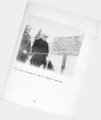| Title |
The Alta Avalanche Studies |
| Subject |
Avalanches; Alta (Utah) |
| Description |
The following digest and analysis of the Alta snow studies is designed particularly; for the instruction of Forest Service personnel who have duties; in alpine ski areas. It is also offered for the information of snow observers,; skiers, and interested persons generally. The study is based on 10 years; continuous observation of avalanche phenomena at Alta, Utah, interpreted in; the light of personal experience and snow data from foreign sources. |
| Creator |
Atwater, M.M.; Koziol, F.C. |
| Publisher |
Forest Service, U.S. Dept. of Agriculture |
| Contributors |
U.S. Department of Agriculture, Forest Service, Intermountain Region, Wasatch National Forest, Alta Avalanche Study Center |
| Date |
1949 |
| Type |
Text |
| Format |
application/pdf |
| Date Digital |
2017-04-07 |
| Identifier |
AltaAvalanche1949 |
| Language |
eng |
| Is Part of |
Ski Archive |
| Rights |
 |
| ARK |
ark:/87278/s67d6j15 |
| Setname |
uu_altaav |
| ID |
1246317 |
| Reference URL |
https://collections.lib.utah.edu/ark:/87278/s67d6j15 |








































































































